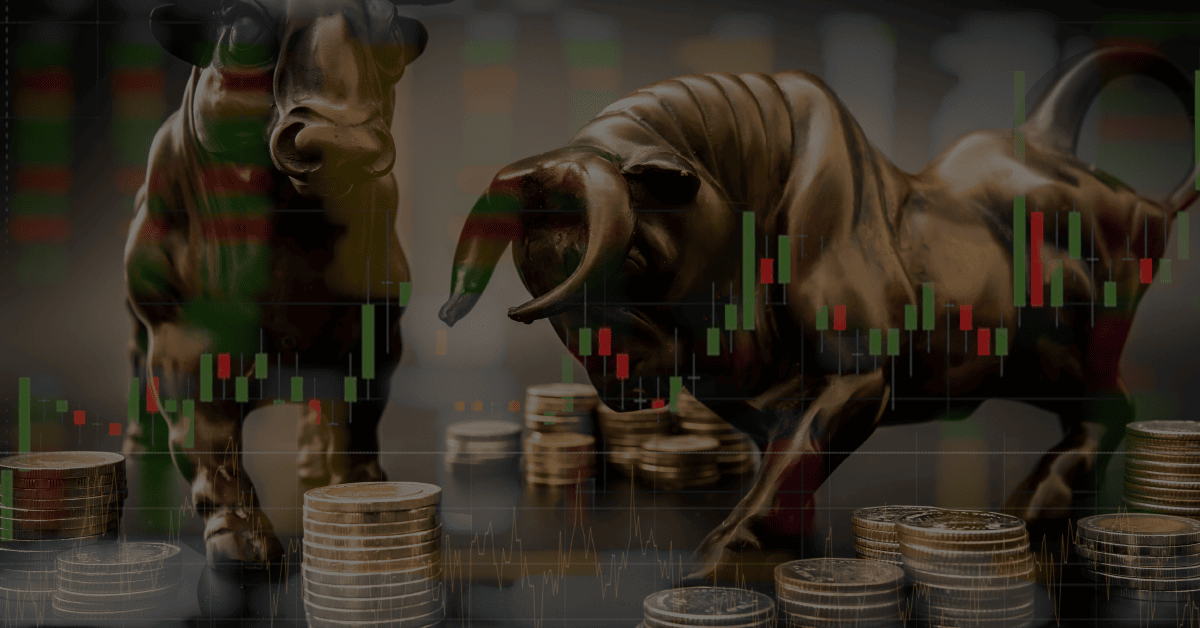It’s easy to forget, but last August the S&P 500 rallied +16.5% from its lows, the Nasdaq Index clocked a +23.3% rally in the same period. Some market commentators at the time went as far as to call the end of the bear market in light of the strong short-term performance seen in US equities.
We published an episode at the time, questioning whether or not that rally would last, beginning a new bull market cycle for stocks, or a bear market rally doomed to end, a short-term move up in prices during a broader down-trend in the market. We called it right then, seeing the balance of risks continuing to the downside, a bear market rally it was.
Nasdaq hit a new low for this bear market cycle last month in December, the S&P 500 index in October. Since then, however, we find ourselves in a similar position to our past selves last summer. We’ve seen a strong short-term rally in stock prices. Since recent lows S&P 500 is up +13%, Nasdaq Index +12.2%.
As with last August, this now again begs the question, is the recent rally in stocks the opening act of a new bull market recovery, or is this yet another bear market rally?
Well, what are the arguments in favour of the former, what evidence is there for this being the start of a new bull market cycle? This is a relatively simple thesis. Inflation is coming down, corporate results and the economy remain relatively healthy, if there is a recession it will be mild and there might not be a recession anyway. China is re-opening, and the European economy is not in as bad shape as previously thought, thanks largely to a mild winter (and lower drag from high energy costs). Meanwhile equity prices have fallen and so market valuations are much more attractive now. Market sentiment was, in December, quite bearish, and this historically has been a good signal to buy stocks.
What about the argument in favour of this being another bear market rally. Let’s go back to last August and review the state of affairs then. Inflation was falling, it peaked in June in the US. Corporate results and the economy remained in relatively robust form, and the expectation was that there might be a slowing in the economy, but the recession (if it comes) will be mild. This sounds familiar.
We have been here before. Bear market rallies are common. In the 2001 bear market cycle, S&P 500 rallied 22%, Nasdaq 43% before both moved down to new lows. Some of the strongest short term rallies in history have been bear market rallies.
What’s new now vs. August last year: (i) China re-opening, (ii) expectations for the European economy are improving (not falling), (iii) interest rates have risen further and are closer to terminal rates. The first two are clear economic tailwinds and likely have supported the recent rally in stocks.
Interest rates rate rises may also pause soon, that’s good news. But we would caution against premature celebration of a pause in interest rates. A pause is no cut. We’re likely some way off a cut in rates. Further, looking at the four biggest bear markets of the past century, even when rate cuts do arrive, they do not necessarily coincide with market lows. In 1929, 2000, and 2007, bear market years which all saw an initial interest rate cut by the Fed, the subsequent respective moves in US equities were down 79%, down 41%, and down 55% respectively.
Economic indicators for the US economy also appear to be going in the wrong direction. Some industrial companies we follow, 3M and Atlas Copco are two good examples supporting the more negative data outlook, both companies have broad exposure to the global industrial economy too, both have reported results weaker than expected and with outlooks for slower growth in 2023.
So where do we stand on this?
The underlying story remains one of caution, in our view. There are reasons to be optimistic if you are an investor with a long-term time horizon, but we continue to think markets could test new lows again later in 2023.
How can we be simultaneously pessimistic (new lows this year) and optimistic (long-term)? We think the investment outlook today is a little like the difference between the weather and the climate. Imagine a wet day in Paris, in July. We might forecast more rain in the coming days, a negative short-term forecast, but remain very confident that dryer weather is coming in the longer-term because we understand the climate and average weather patterns one should expect in Paris in July.
Similarly, we think the fact that interest rates are unlikely to be cut for some time, the economy is likely to slow at least somewhat in 2023, and the full ramifications of higher interest rates are yet to feed into the system, are strong enough reasons to remain cautious on the short-term market outlook. The tailwinds of China re-opening and better Europe vs. expectations could support the rally in the short-term, but the underlying global story of higher interest rates, likely slowing in the US economy, and still elevated equity valuations vs. history, mean we continue to see a risk of further bouts of market weakness.
The good news here echoes what we have been saying for some time now. Valuations in many parts of the market warrant buying now, whatever the short-term outlook for the market may be. That’s exactly where investors should be focussed, in our view, buying quality assets at reasonable valuations, holding them for the long-term, and trying your best to ignore short-term noise in markets, bullish or bearish!
Disclaimer: The views expressed in this article are those of the author at the date of publication and not necessarily those of Dominion Capital Strategies Limited or its related companies. The content of this article is not intended as investment advice and will not be updated after publication. Images, video, quotations from literature and any such material which may be subject to copyright is reproduced in whole or in part in this article on the basis of Fair use as applied to news reporting and journalistic comment on events.


